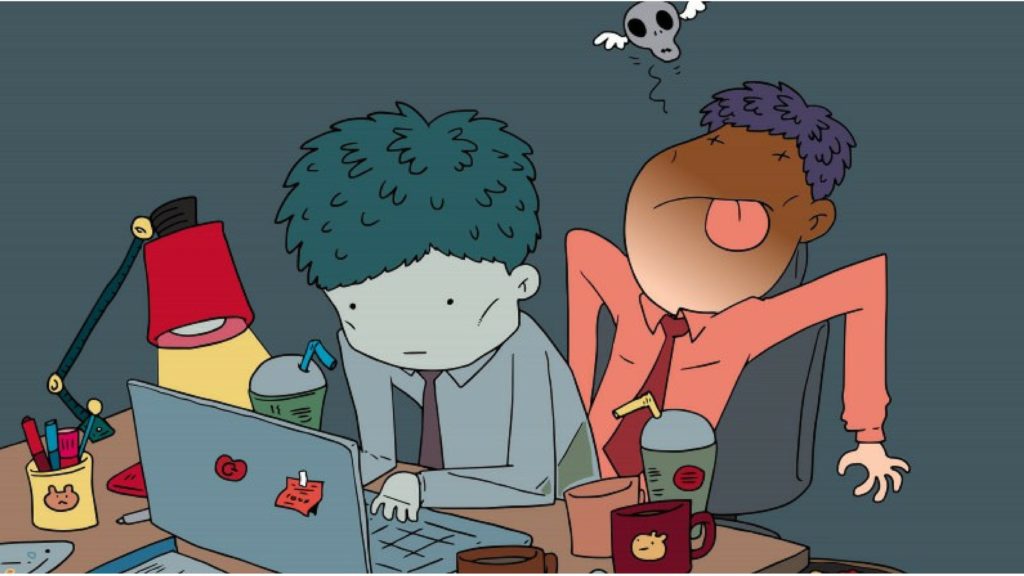Good leader vs. bad leader – Which one are you?

School leadership is a tough responsibility and one of the most rewarding things you can do in your teaching career. It is also important when in this position, to not abuse your position and remember, you are working with people, not numbers.
This also includes when working with those around the leadership table – even simple conversations can become difficult. When things get awkward, and they will, it is a useful exercise to gauge if you or those who you are working with are showing poor leadership attributes.
These are behaviours that undermine a team of senior leaders and damage the hearts and minds of colleagues working in schools. What’s worse, is what impact these leadership behaviours may be having on students?

Here are my top-five signals for when situations in school are not being handled effectively.
1. Narrow-Minded
The poor leader is narrow-minded and lacks passion, they are disorganised and fail to reflect on what works. They rarely seek feedback and continue with the latest fads, failing to consult opinion or take ‘No’ for an answer.
They do not share ideas and resources and fail to encourage collaboration in others. They are closed to new ideas, methods and even colleagues new to the school. They may be in a school for a quick-fix to promotion and it is perfectly normal to think, ‘how did they ever gain a leadership position?’
2. Playing Safe
Poor leaders do not embrace change and play it safe. For example, they may continue with grading lesson observations for control which does not allow their teaching staff to take risks. They ignore the evidence and do not keep up to speed with DfE and Ofsted changes, often citing the latter for control and fear over systems of accountability in school.
What’s worse, inexperienced teachers or those who are not in positions of power, have their opinions muted and are shut down.

3. Power
Poor school leaders use their position of power to make decisions – sometimes the wrong ones – and steam ahead when they are against the majority. Sometimes the position of power can manifest itself into various forms of bullying; often non-verbal around the working environment through emails, deadlines and final decision-making.
When decision making is required, it is a useful reminder to remember that ‘power’ manifests itself in three forms – you may be likely to find yourself with at least one attribute – to use when working with another person.
1. Positional – the person with the final decision; at the top of the hierarchy
2. Knowledge – the person that knows the most information
3. Monetary – the person managing the budget.
Often we find ourselves requiring decisions to be made, but often the person we are working with is the person either with the positional or monetary power. To bypass these decisions with ease, my top tip would be to know your stuff. Be the person with the most knowledge.
4. Inconsistent
The worst quality of all poor leadership is inconsistency. This is very similar to having a friendship which has broken down. Often the main reason is that the behaviour has been inconsistent with what you are accustomed to, even when you have both faced difficult circumstances in the past. This inconsistent or surprising behaviour takes you off-guard which leads to lack of trust and loyalty.
The same could be said for leaders in schools who lack substance. They provide all the bravado around the table, but on the corridors and in the playground they fail to show up or offer the support other colleagues desperately need.
Alarmingly, they lack any credibility in the classroom. They fail to take their own teaching seriously, using status and school systems to control students before allowing learning to take place and these signs of unreliability start to manifest themselves as simple non-verbal cues: Not turning up to a duty spot, or failing to meet their own deadlines in-line with the school calendar.

5. Compassion
Finally, we all know the school leader who marches the school corridors, barking rules and abuse at students. Every school needs a voice to whip students into shape, but not when the shouting becomes abusive or disruptive to the environment.
These types of school leaders are delighted in their decisions, taking more than pleasure in observing a colleague’s unhappiness. They lack compassion and do not see the merit in talking through any thought processes, explaining how decisions are made and why they need to be made. You will often hear them say: “It’s a school decision … just get on with it!”
In all these scenarios of poor leadership, how best can one keep a civil tongue or at least stand up to these behaviours?
Either you or others will need a confidant. Someone to go to with the most serious and trivial requests. You will need to learn to respond accordingly. If you don’t have an answer immediately, be confident enough to say “let me get back to you” and make sure you do. There is nothing worse than false promises. Learn the art of confidentiality, particularly around the leadership table – and to develop the art of support and challenge, learn to listen and when to bite your tongue. It takes years to master.
If you see a member of staff who has ‘lost it’ with students, always intervene and offer support. If you see a senior leader who has ‘lost it’ with students and/or staff, always intervene and help calm the situation. Aim to manage your exhaustion and emotions, but never let this take over your decisions or cover the ‘real you’. Your school community will find value in your leadership if you can show that you are also human, so don’t forget to laugh, particularly at yourself. It is easy to forget that leadership can sometimes quash our intrinsic human qualities.

Be honest with colleagues. Make decisions and explain why you have made them. Always remember why you joined the teaching profession, and then why you wanted to become a senior leader. If you want to use senior leadership as a stepping stone into headship, then take your time to learn the ropes and consider leading on priorities outside of your expertise. This will help you to develop a wider picture of school life so that you can make informed decisions.
I’m not denying school leadership is easy. It is very difficult at times and very rewarding, but some of the examples I have shared above are qualities I have observed in others throughout my teaching and school leadership career. I’ve learnt from their mistakes as well as from my own.
Therefore, if I could recommend attributes that all school leaders must have to avoid displaying these poor attributes, they would be:
1. Create and nurture strong relationships with everyone.
2. Remain highly-visible, omnipresent and accessible.
3. Continue to be highly consistent and fair to all.
4. Learn to observe small details whilst managing the bigger picture.
5. To develop credibility, trustworthiness and sincerity, simply ask for feedback.
6. Be proactive, strategic and restless to improve all aspects of school life.
7. Take time to become super-organised with bulletproof time management skills. Always turn up on time and communicate in advance when you cannot meet a deadline.
Whether you work in schools or not, these qualities are simple human attributes that we can all display – the challenge for all of us, is how our behaviours are affected – and what impact it has on others – when our working environment is very stressful and our work is time poor.








Responses